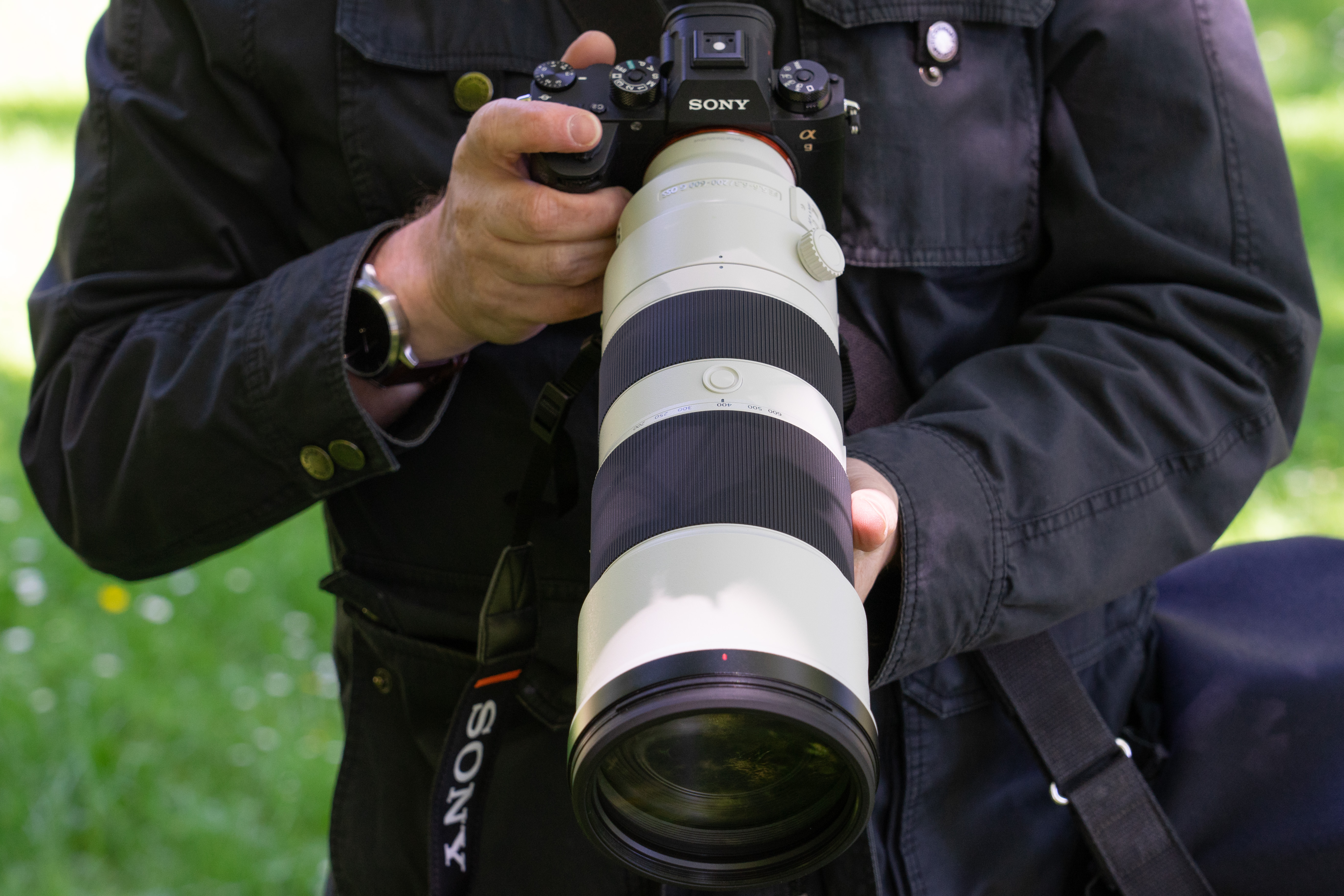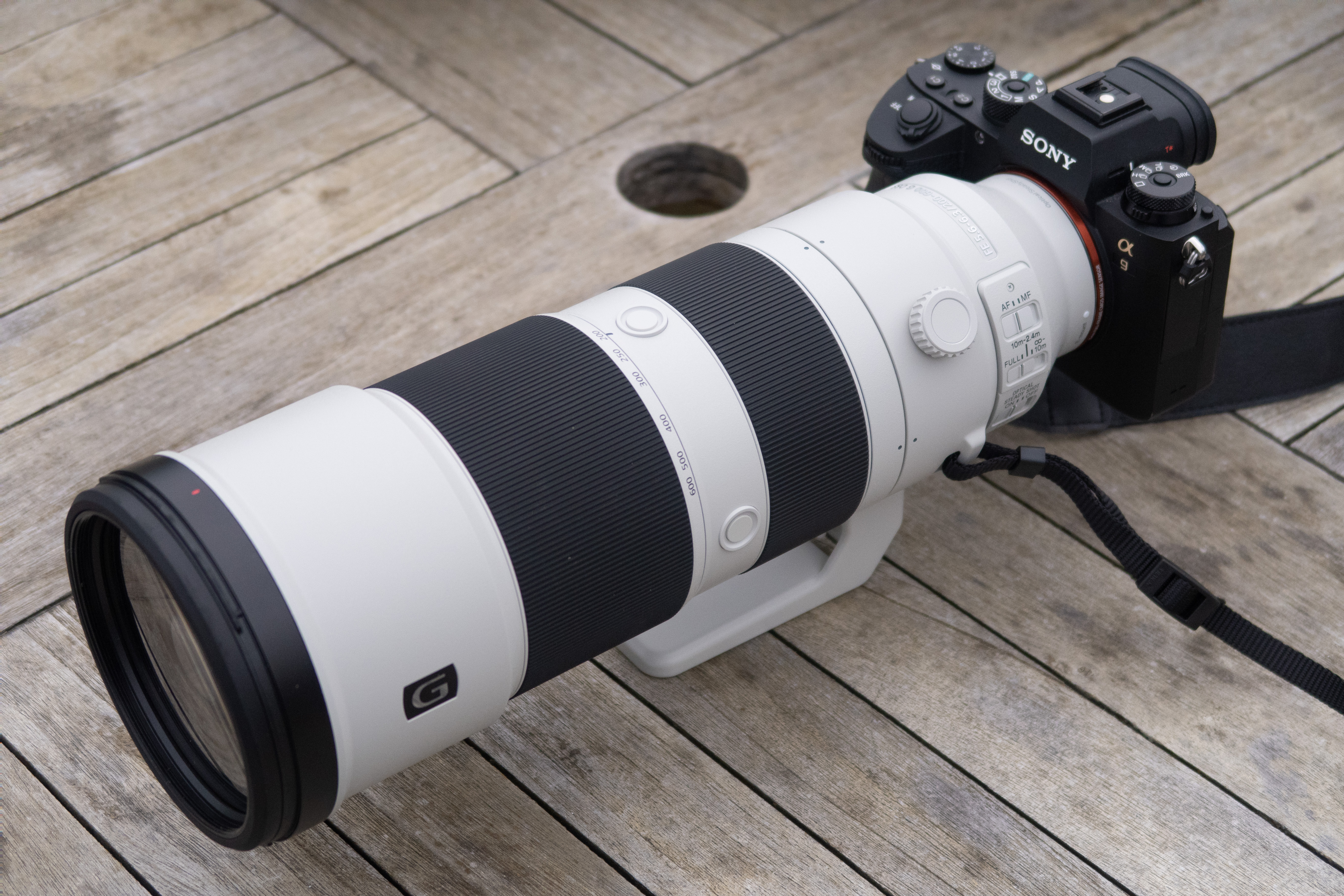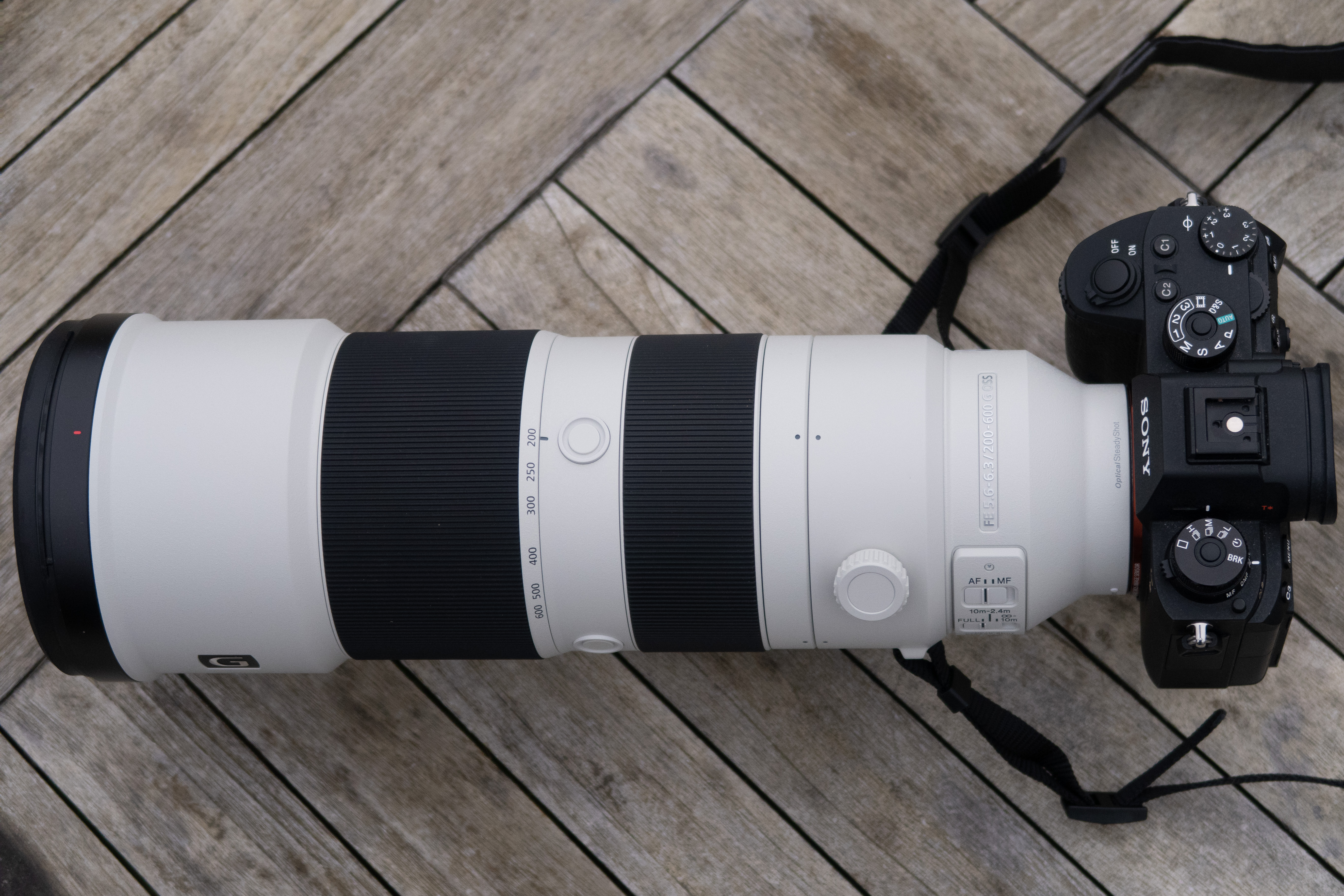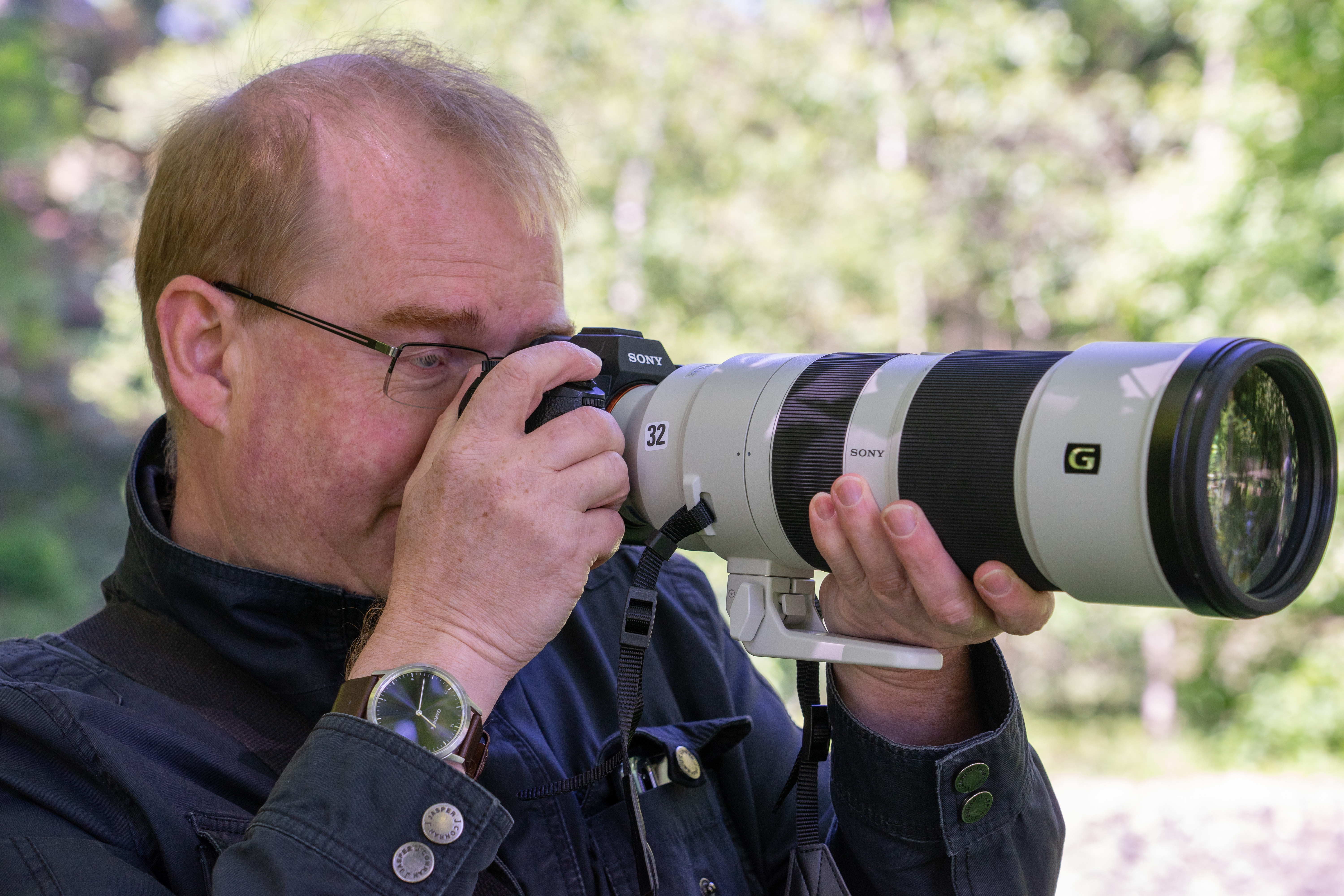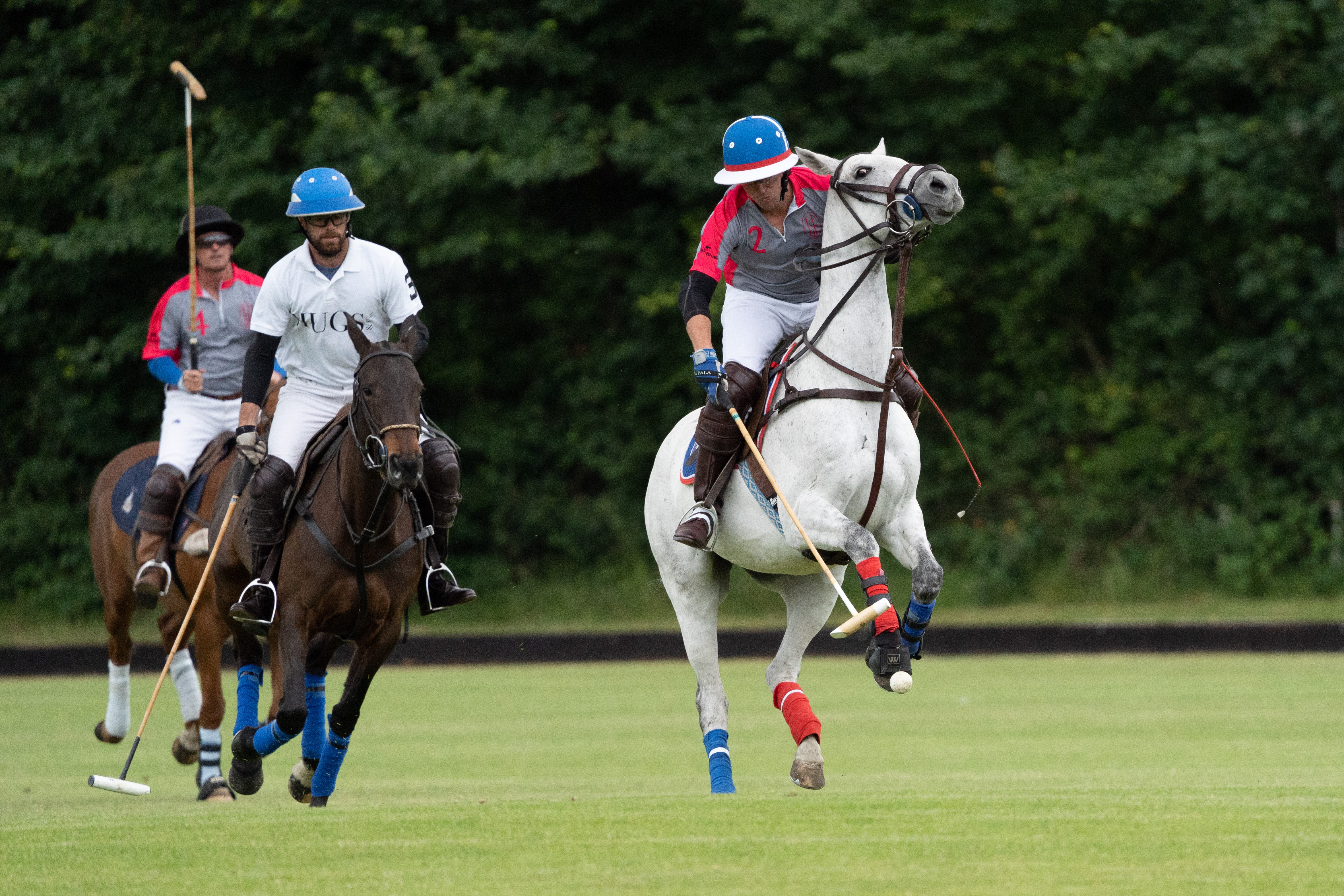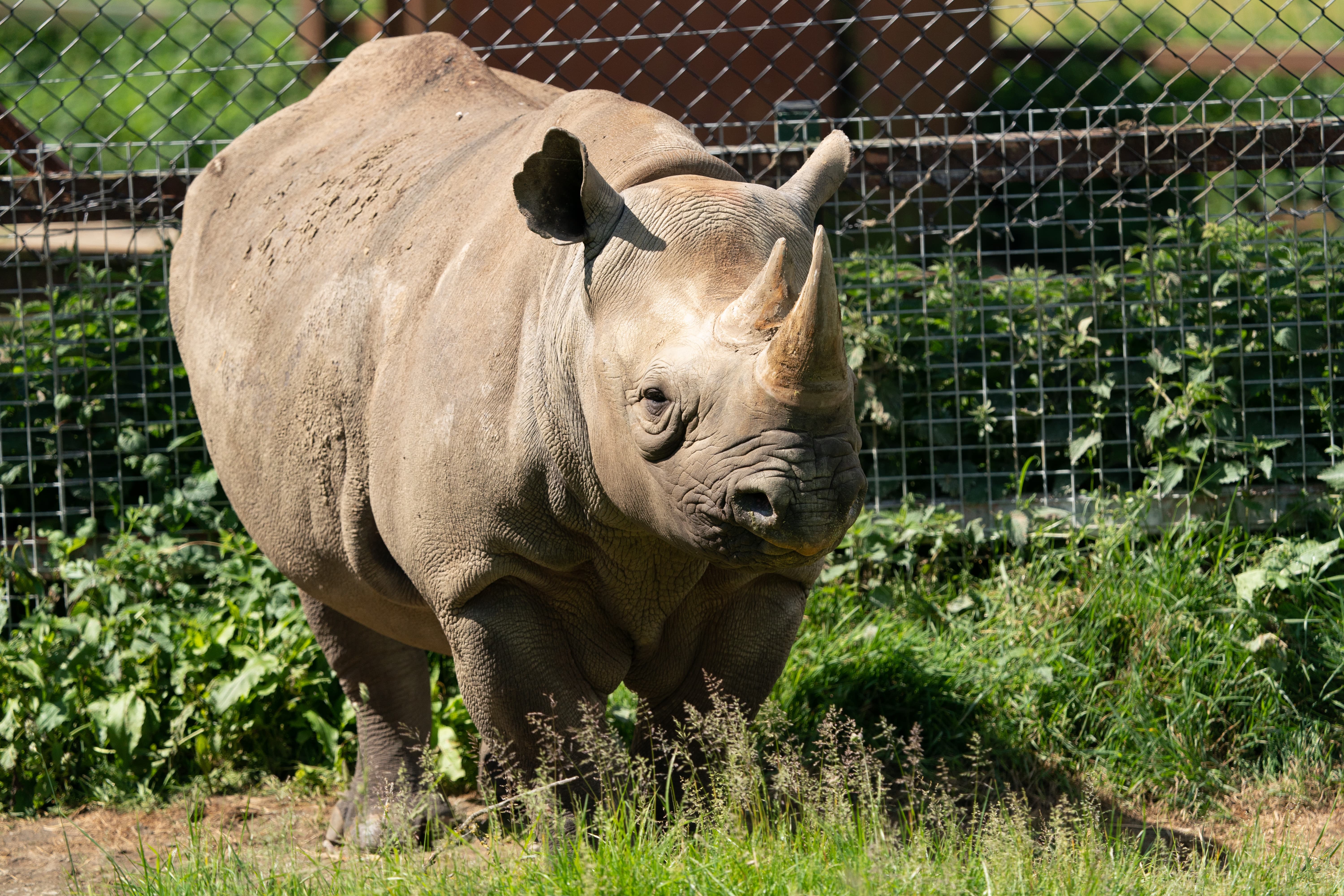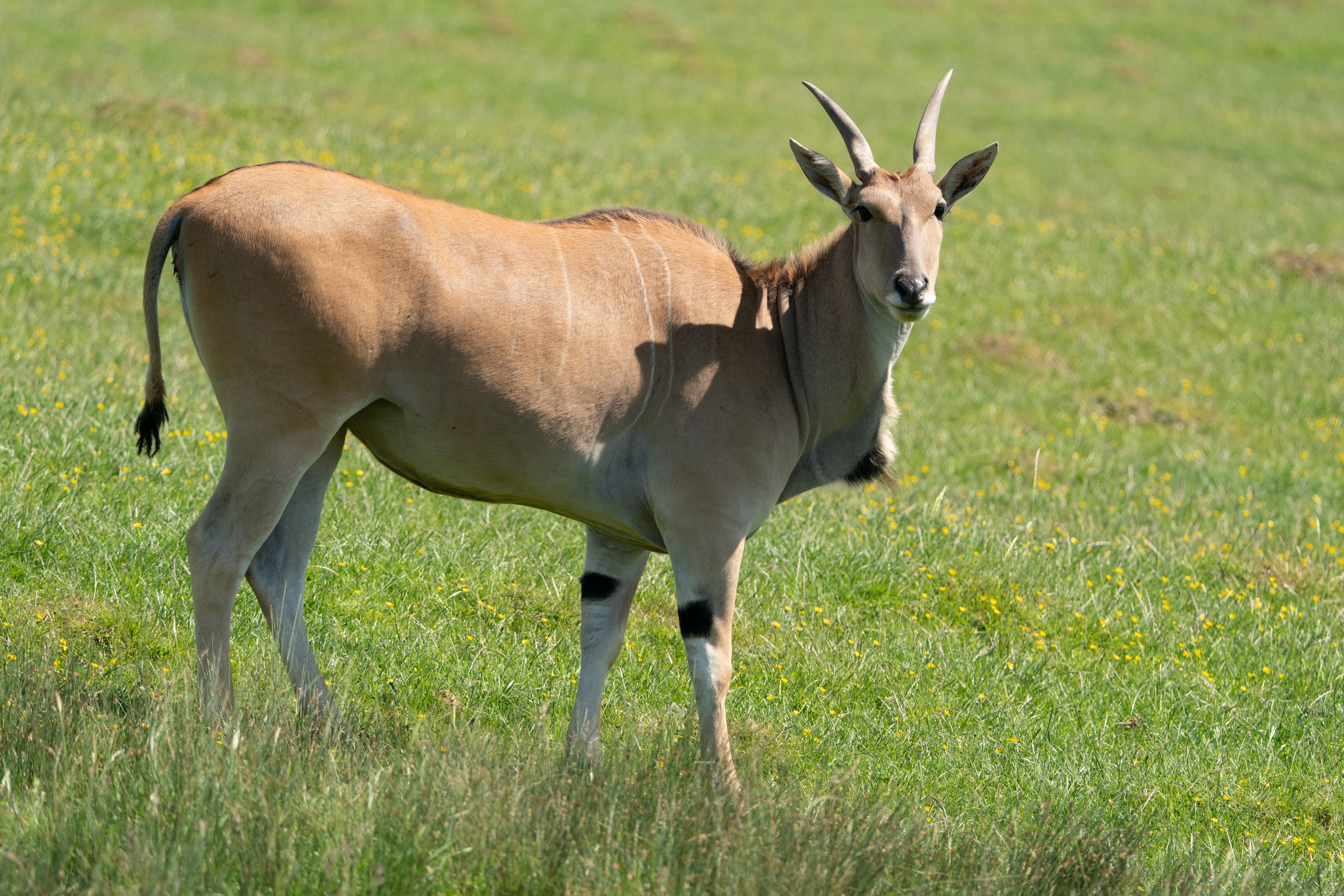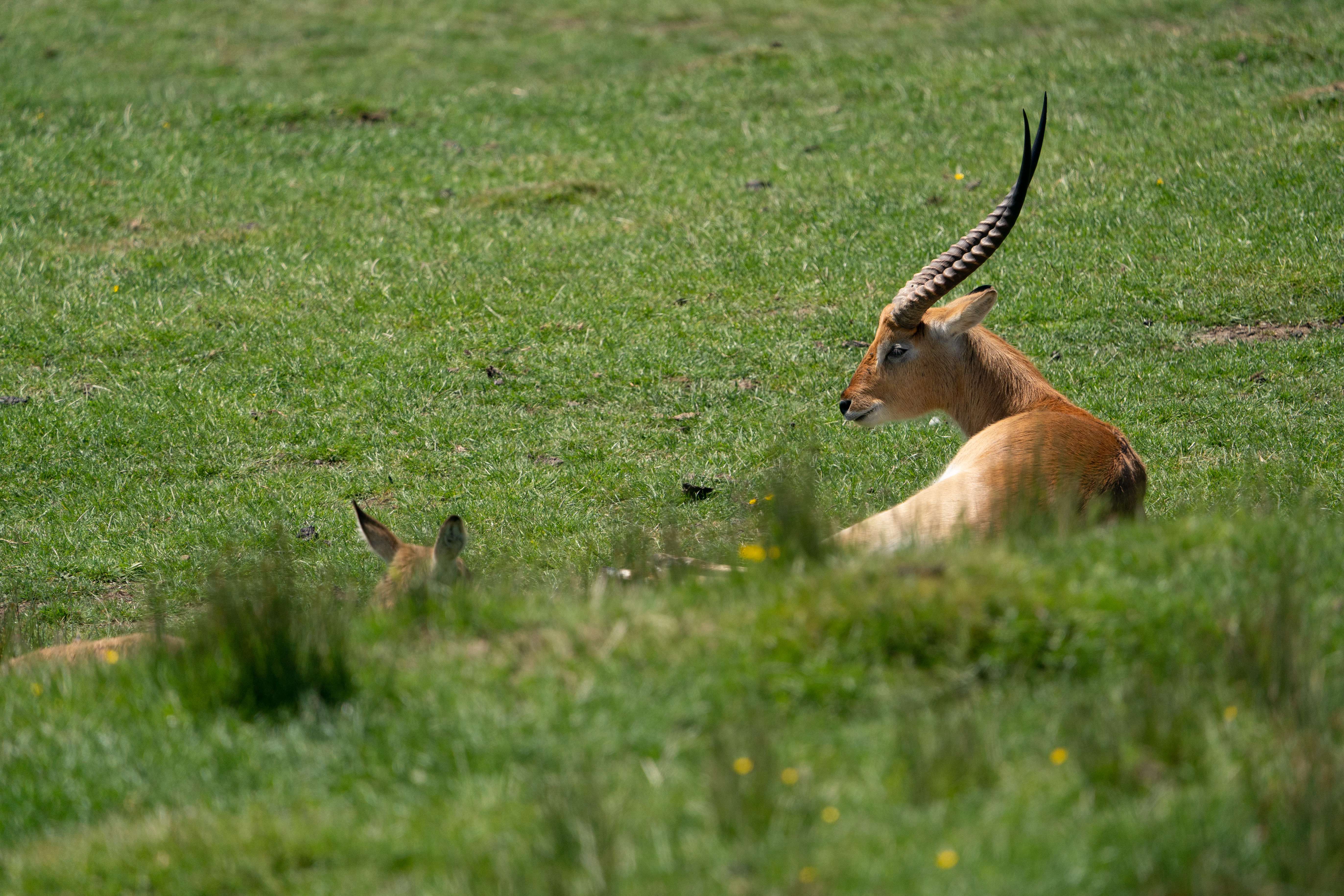Sony FE 200-600mm F5.6-6.3 G OSS: At a glance
- £1800
- Internal zoom
- Optical image stabilisation
- Direct-drive SSM autofocus
We wouldn’t often preview a new lens that’s only just been launched, but then again, it’s not often we see something quite like the Sony FE 200-600mm F5.6-6.3 G OSS. For a start, it’s the first 600mm full-frame zoom made by a mainstream camera company, eclipsing Nikon’s AF-S Nikkor 200-500mm f/5.6E ED VR as the longest such super-telephoto zoom. It’s also very practical to use, thanks to an internal zoom design. Perhaps most surprisingly, given Sony’s well-earned reputation for eye-watering prices, it’ll cost a competitive £1800 when it goes in sale in September. I had a chance to shoot with one at a pre-launch press event, and I think it’s likely to be very popular indeed with Alpha 7-series users.
In an age when every new camera and lens seems to be leaked on the internet before launch, the 200-600mm had a particularly bizarre start, with an unfinished engineering sample somehow appearing on an internet auction site. This inevitably fuelled plenty of wild speculation around the lens, and how it might compare to existing optics. Let’s take a step back from all that, and look at the reality.
Sony FE 200-600mm F5.6-6.3 G OSS – Features
In essence, the FE 200-600mm F5.6-6.3 G OSS is an ultra-telephoto zoom that’s designed for use with Sony’s full-frame mirrorless cameras. The maximum aperture may look perilously slow to DSLR users, but one advantage of mirrorless cameras is that there’s no penalty in terms of viewfinder brightness or autofocus speed under most shooting conditions. The lens can also be used with APS-C format cameras, of course, on which it will give a 300-900mm equivalent range, but I’m not convinced it will be a great match to small rangefinder-style A6000-series bodies in terms of handling.
Make no mistake this is a sizeable lens, measuring 31.8cm in length and 11.8cm in diameter. But at 2115g, it’s not as heavy as you might think, thanks to a liberal use of magnesium alloy in the barrel construction. As befits a lens that will overwhelmingly be used outdoors, it’s designed to be weather-resistant, with an array of seals protecting against water and dust from entering the lens. The smoothly-rotating collar has a choice of 1/4in or 3/8 in sockets, and is marked at 90-degree intervals for easier alignment in portrait format.
The lens’s most important operational feature is that it doesn’t change length on zooming. In practice this makes it much easier to shoot with than Tamron and Sigma’s 150-600mm DSLR lenses, which both employ extending barrel designs that get distinctly front-heavy at full telephoto, and require a fair bit of effort to move. In contrast, the 200-600mm maintains the same balance at all zoom positions, and requires just a quarter turn of the smoothly-rotating zoom ring to progress from 200mm to 600mm. It’s difficult to overstate just how much of a difference this makes when you need to change focal length quickly.
In terms of optics, the 200-600mm uses no fewer than 24 elements arranged in 17 groups, including five extra-low dispersion (ED) glass elements to minimise chromatic aberration, and an aspherical element to suppress spherical aberration and field curvature. Nano AR coating is used to suppress flare, while fluorine coating on the front element is resistant to water and grease marks. An 11-bladed diaphragm maintains a circular aperture for attractive bokeh.
Sony has employed a direct-drive supersonic motor (DDSSM) for autofocus, and again focusing is entirely internal. Three AF stop buttons are arrayed at 90 degrees around the barrel, ensuring one is always easily accessible for both landscape- and portrait-format shooting. A three-position focus limiter switch covers long-range shooting from 10m to infinity, close-ups from 2.4-10m, and the full focus range. The firm has also included its Linear Response MF system, which aims to give a similarly intuitive feel to manual focusing as using a mechanical lens.
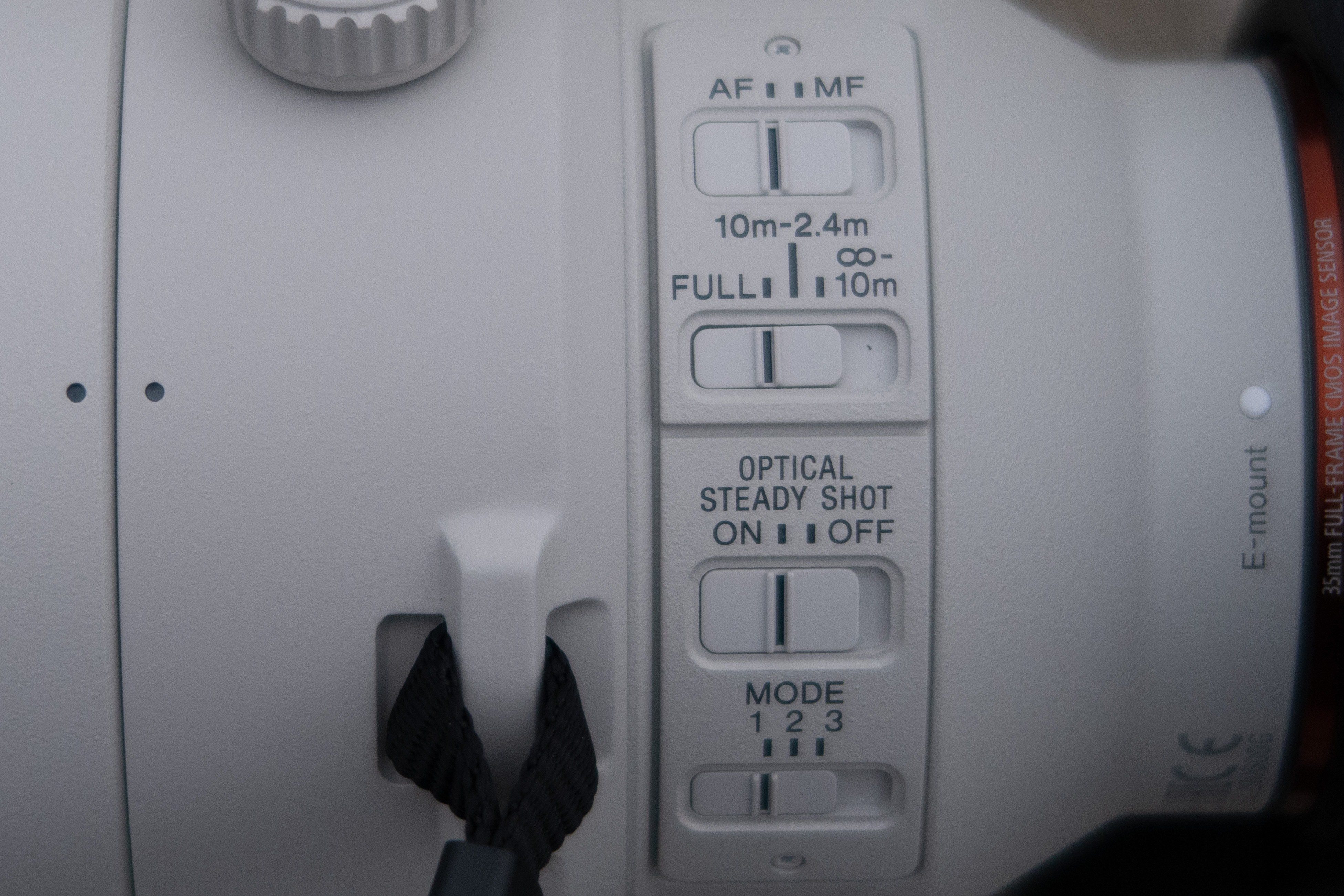
The control panel includes a focus limiter switch and a three-mode image stabilisation switch
In use the autofocus is very quick and essentially silent, and tested on the Alpha 7 III at a polo game, I found it had no problem at all keeping up with horses running head-on towards the camera. I also found the autofocus to be perfectly accurate with static subjects, but with the expected proviso that depth-of-field is extremely narrow, so you have to extremely careful about where you place the AF point. As is essential on such a long lens, optical stabilisation is built into suppress camera shake, using Sony’s latest three-mode OSS system. Borrowed from the top-end FE 400mm F2.8 GM, this adds an additional mode for tracking unpredictable movement, alongside those for panning and shooting static subjects.
As the icing on the cake, the 200-600mm is also designed to be fully compatible Sony’s 1.4x and 2x teleconverters, giving 280-720mm f/8-9 and 400-1200mm f/11-13 optics respectively. The firm says these combinations still give outstanding image quality and AF performance, but sadly I wasn’t able to put these audacious claims to the test.
Sony FE 200-600mm F5.6-6.3 G OSS – First Impressions
After just a couple of sessions shooting with it, I suspect that the FE 200-600mm F5.6-6.3 G OSS is set to be a big success for Sony, and strongly in demand by photographers who enjoy shooting subjects such as wildlife, sports and airshows. Despite its extremely useful super-telephoto range, it isn’t too heavy or unwieldy, and crucially it appears to focus quickly and deliver decently sharp images wide open across the full zoom range – at least in good light.
Not only is it likely to be high on many Alpha 7-series users’ wish-lists, it’s a unique lens that could itself help induce photographers to buy into Sony’s system. I’m looking forward to giving it a more thorough test when review samples become available.
Sony FE 200-600mm F5.6-6.3 G OSS – Sample Images
See below for a selection of sample image shot using the Sony FE 200-600mm F5.6-6.3 G OSS on the Alpha 7 III and Alpha 9. These are raw images converted using Adobe Camera Raw with some cropping and minor tonal adjustments. All images are copyright Andy Westlake / Amateur Photographer. Click on any image to see the high-resolution version.


